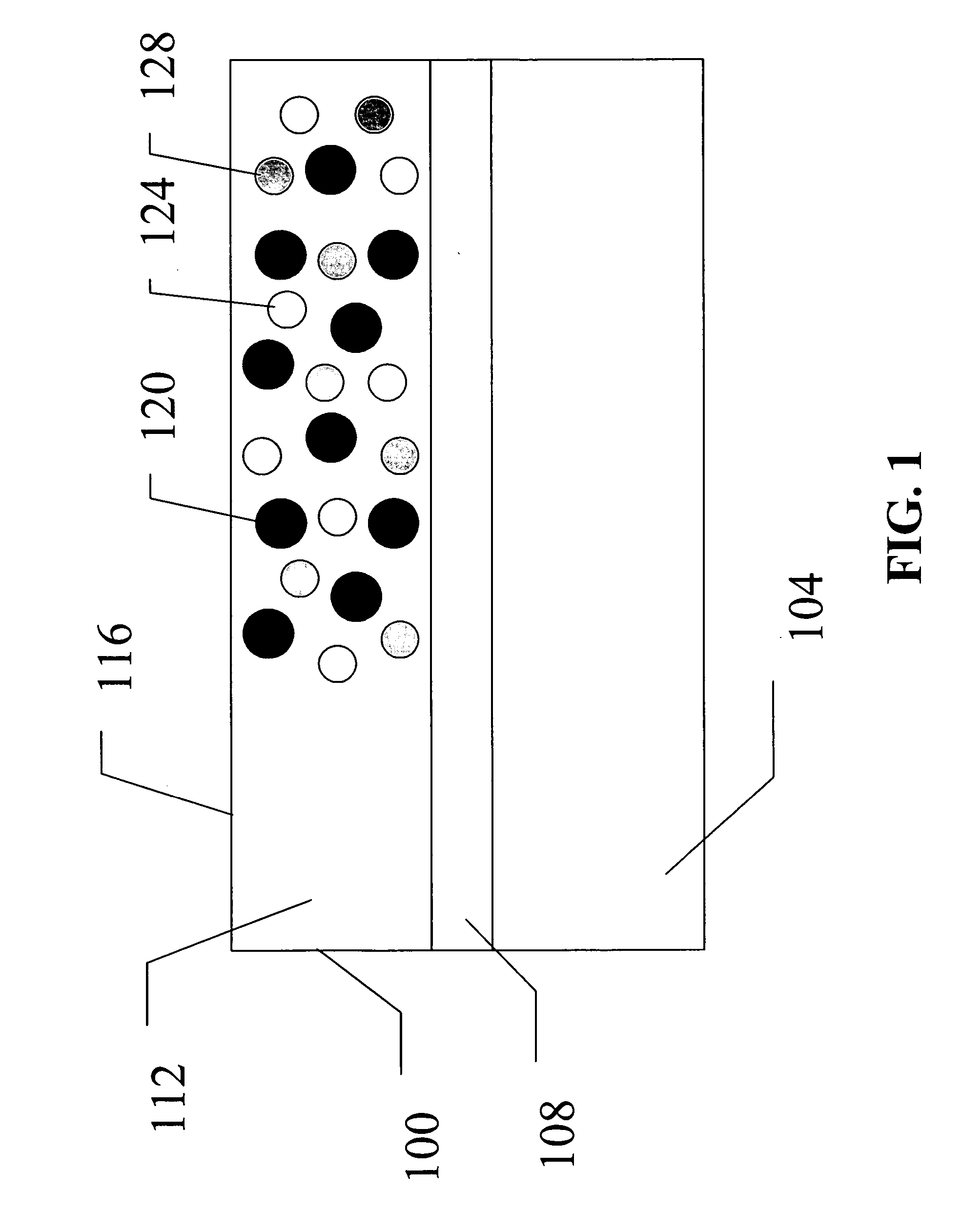Coating for environmental protection and indication
a technology for environmental protection and indications, applied in the directions of packaging, climate sustainability, pharmaceutical packaging, etc., can solve the problems of low thermal stability of organic materials, severe limitations on the useful limits of organic coatings, and difficult application of organic coatings for these purposes, etc., to achieve good thermal resolution, easy to apply, and cheap production
- Summary
- Abstract
- Description
- Claims
- Application Information
AI Technical Summary
Benefits of technology
Problems solved by technology
Method used
Image
Examples
example 1
[0042] Initially, one should weigh out the raw materials to be used in the coating. One may use the following, non-limiting examples to set the ratio of Silicate liquid, Silicate powder or fly ash, filler(s), and wetting agent(s).
ItemQuantity wt. Percent rangeSodium or Potassium Silicate liquid20-55%Alumino-Silicate powder or fly ash10-25%Filler(s)20-70%Wetting Agent(s) 0-0.5%
[0043] Then, using a suitable mixing vessel, one should place the weighed ingredients in a vessel and mix thoroughly, either by hand or machine, at room temperature. The mixing step is finished when all ingredients are wetted out and the batch is not lumpy.
[0044] Next, one may apply the coating to a substrate. The following non-limiting examples of application techniques may be used to provide coating of a corresponding thickness.
MethodThickness (inches)Liquid Sprayabout 0.001-0.003Stencil Printabout 0.001-0.005Doctor Bladeabout 0.001-0.010Pad Printabout 0.001-0.005
[0045] After application, the coating ma...
example 2
[0048] A multi-channel recorder was used to log thermal results and a high intensity quartz heat lamp was used to supply heat. Candidate materials were evaluated thermally. All samples were prepared on a 6″×3″×0.5″ steel coupon. Each coupon had half of one surface coated with the test material and the other side coated with a control coating of organic binder and a black pigment (muffler paint). A total of 6 thermocouples were mounted with the beads just behind the test surface, from which accurate temperature measurements could be taken.
[0049] A geopolymer was evaluated with a SiC filler. The geopolymer was formed, applied, and cured according to the methods given above. The geopolymer created an organic free, thermally resistant chemical bond with the coupon. Optimized formulations were made that demonstrated improved emissivity. Using a high intensity quartz lamp, a 480 second exposure was made. The run incorporated two minutes (120 seconds) with the lamp on, followed by 10 seco...
example 3
[0052] Several material candidates were selected to serve as candidate coating materials for testing the geopolymer based coating, based on known metal emissivity. A sample table of metal emissivity is set forth below.
Emissivity @Emissivity @MaterialTemperatureTemperatureAluminum metal0.028 @ 100 C. 0.06 @ 500 C.Aluminum oxidized0.11 @ 200 C.0.19 @ 600 C.Copper metal0.02 @ 100 C.0.15 @ 1083 C. Copper oxidized 0.6 @ 200 C.0.6 @ 1000 C.Cobalt0.13 @ 500 C.0.23 @ 1000 C. Cobalt Oxidized0.06 @ 1000 C. 0.12 @ 500 C.Nickel0.06 @ 100 C.0.12 @ 500 C.Nickel Oxidized0.37 @ 200 C.0.85 @ 500 C.Iron0.05 @ 100 C.Iron Oxidized0.74 @ 100 C.0.84 @ 500 C.
[0053] A list of candidate coating materials was developed and several material candidates were selected for evaluation for their thermal emissivity. The coatings were direct deposited on a steel test coupon to show ease of application as a thin film. The advantage of this technique was determined to be relative ease of use and the mechanical stabil...
PUM
| Property | Measurement | Unit |
|---|---|---|
| temperatures | aaaaa | aaaaa |
| size | aaaaa | aaaaa |
| size | aaaaa | aaaaa |
Abstract
Description
Claims
Application Information
 Login to View More
Login to View More - R&D
- Intellectual Property
- Life Sciences
- Materials
- Tech Scout
- Unparalleled Data Quality
- Higher Quality Content
- 60% Fewer Hallucinations
Browse by: Latest US Patents, China's latest patents, Technical Efficacy Thesaurus, Application Domain, Technology Topic, Popular Technical Reports.
© 2025 PatSnap. All rights reserved.Legal|Privacy policy|Modern Slavery Act Transparency Statement|Sitemap|About US| Contact US: help@patsnap.com

